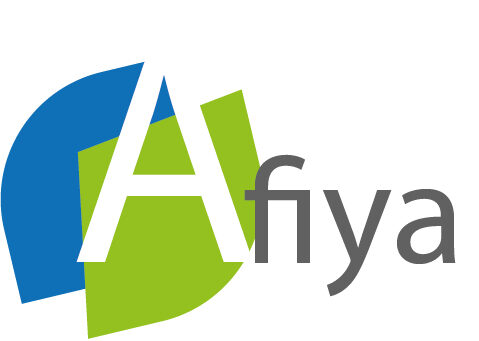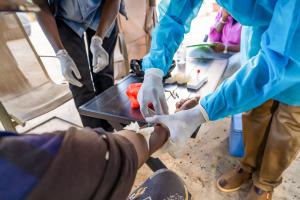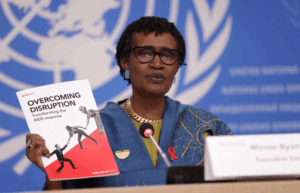Health financing is one of the major challenges facing African countries. Despite continental and international commitments to ensure universal access to care, most African health systems remain fragile, chronically underfunded, and dependent on external aid.
As needs explode with demographic growth, the epidemiological transition (the double burden of infectious and chronic diseases), and health crises (Ebola, Covid-19), new financing strategies are becoming imperative.
This editorial analyzes three essential levers for sustainable health financing in Africa: health taxes, public-private partnerships (PPPs), and African health funds, exploring their potential, their limitations, and the conditions for their success.
I. Health Taxes: Smart Fiscal Policy Serving Public Health
A dual objective: public health and tax revenue
Health taxes target products whose consumption is associated with high health risks: tobacco, alcohol, sugary drinks, ultra-processed foods, and polluting fuels.
The objective is twofold:
reduce risky behaviors,
and mobilize financial resources that can be allocated to health.
Encouraging experiences in Africa
South Africa introduced a tax on sugary drinks in 2018, generating more than USD 200 million per year and contributing to a decline in sugar consumption.
Kenya, Uganda, Nigeria, and Botswana have applied taxes on tobacco and alcohol for several years, with measurable effects on public health.
Togo adopted a law in 2021 to tax harmful products in order to finance universal health insurance.
Challenges to overcome:
Despite their potential, these taxes face several obstacles:
Industry lobbying (sugar, tobacco, alcohol) slowing their adoption.
Political and social acceptability sometimes low.
Lack of traceability: tax revenues are not always reinvested in health due to the absence of clear budget allocations.
II. Public-Private Partnerships (PPPs): Investment Catalysts, But Vigilance Required
A tool for pooling resources
PPPs make it possible to mobilize the resources, expertise, and innovation of the private sector to meet public health needs. They can involve infrastructure construction, service management, or technological development (telemedicine, digital platforms, logistics).
African examples
Morocco: construction of regional hospitals through PPPs.
Côte d’Ivoire: partnership with a private consortium to modernize biomedical laboratories.
Rwanda: collaboration with Babylon Health to deploy large-scale telemedicine through connected health centers.
Conditions for success
However, health PPPs carry risks if not well regulated:
Risk of commodification of care, to the detriment of equity.
Legal loopholes in contracts that may disadvantage states.
Need for strong regulatory bodies to protect the public interest.
III. African Funds: Towards Budgetary Sovereignty in Health
Ambitious pan-African initiatives
Faced with chronic dependence on international aid, African initiatives are emerging to create endogenous financing mechanisms:
Africa CDC proposed a pan-African epidemic fund, in response to the limits revealed by the Covid-19 pandemic.
The African Union is discussing the creation of a continental fund for universal health coverage.
National initiatives such as Senegal’s CMU Fund or Ghana’s Health Benefit Package Fund serve as examples to follow.
Innovative financing and continental actors
The African Development Bank (AfDB) supports health insurance projects, community financing, and health bond issuance.
The African Guarantee Fund backs private investments in health through loan guarantees.
Structural challenges
National contributions remain low: on average less than 5% of national budgets are allocated to health, far below the Abuja commitment (15%).
Insufficient coordination between different funds and partners.
Lack of transparency and accountability in resource use.
IV. Rethinking Health Financing in Africa: Key Recommendations
To ensure equitable and sustainable health coverage, Africa must:
Increase the budget share allocated to health, in line with Abuja commitments.
Institutionalize health taxes and ensure their allocation to health.
Strictly regulate PPPs so they benefit the most vulnerable populations.
Strengthen progressive taxation to reduce inequalities and broaden the contributory base.
Involve citizens and civil society in fund governance.
Invest massively in prevention: every dollar invested in prevention saves several in curative care.
Health financing in Africa can no longer rely on outdated models or volatile external aid. It must be anchored in responsible fiscal policies, balanced partnerships, and a firm political will to build resilient, equitable, and sovereign health systems.
The urgency is not only financial but also ethical and social: to guarantee every African, wherever they live, effective access to quality healthcare.
Dr F Abolore
References (selection)
Africa CDC – Africa’s Health Financing in a New Era (April 2025): highlights a 70% drop in external aid between 2021 and 2025, Abuja commitment (15% of national budgets), and the only countries meeting it (Rwanda, Botswana, Cabo Verde).
Africa CDC – Africa’s Plan to Fill Health Funding Gaps Amidst Declining Coffers: stresses the need to mobilize domestic resources to sustain public health gains.
Lancet Planet Health (2021) study on the impact of South Africa’s sugary drinks tax: 29% reduction in purchases and 51% reduction in calories consumed in some populations.
Reuters / WHO “3 by 35” report (July 2025): recommends raising sugar, alcohol, and tobacco taxes by 50% by 2035 to generate up to USD 1 trillion and reduce non-communicable diseases.
The Guardian (January 2025): sugary drinks responsible for 21% of new diabetes cases in sub-Saharan Africa; calls for stronger taxes.
Scoping review on innovative financing in Africa: PPPs used for infrastructure, laboratories, training; but mixed results on equity and sustainability due to regulatory gaps.
Critical analysis in Review of Evolutionary Political Economy (2024): World Bank’s role and impact of financialization through PPPs, with risks for health equity.
World Bank blog (March 2024) on PPPs to accelerate universal health coverage in sub-Saharan Africa, with case studies (Ethiopia, Togo, Cabo Verde).
Africa CDC (Dec. 2024): describes Rwanda’s community-based health insurance model (mutuelles de santé), over 90% coverage, integration of community health workers, and their remuneration through local income-generating cooperatives.
Wikipedia / Healthcare in Rwanda: mandatory health insurance introduced in 2008, 90% coverage by 2010, mixed financing (premiums, state, donors), spending around 6.5% of GDP in 2013.
WHO feature story (May 2022): Ghana’s national framework for sustainable health system financing, strengthening primary coverage and health investment planning via SDG3 GAP and the Medium-Term Health Development Plan.
Wikipedia / Healthcare in Ghana: description of NHIS launched in 2003, estimated coverage at 36% in 2018 and 51% in 2021, challenges with informal sector contributions and reimbursement delays.







OTHER ARTICLES
Zambia : Health Sector Progress Update
Rift Valley Fever in Senegal: On the Frontline to Protect Communities
Zambia : commemorates world AIDS day